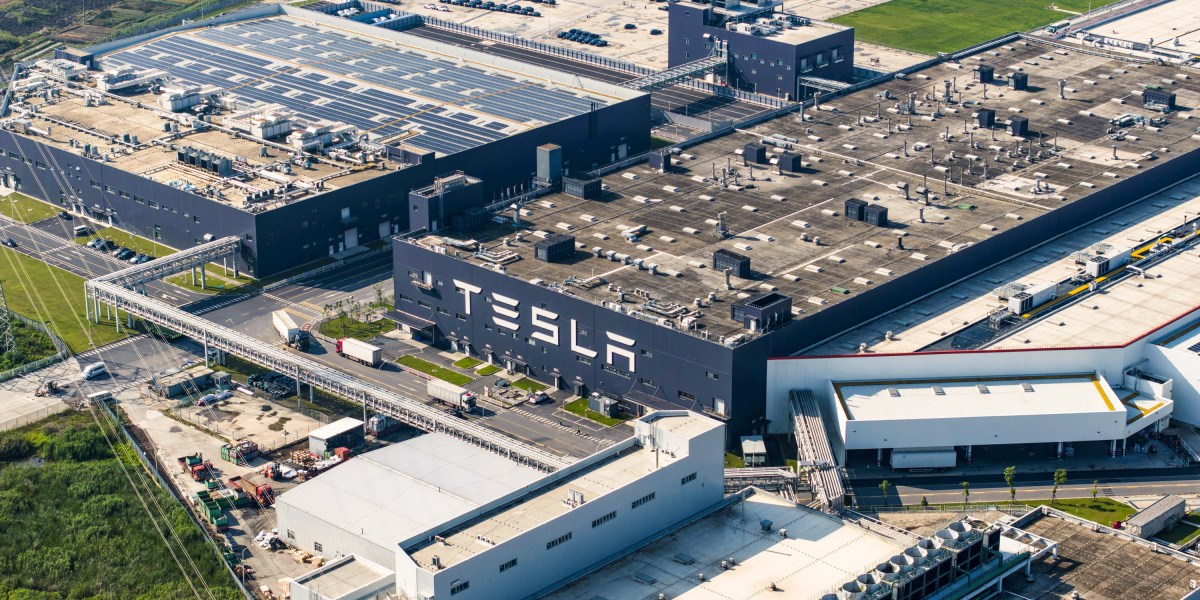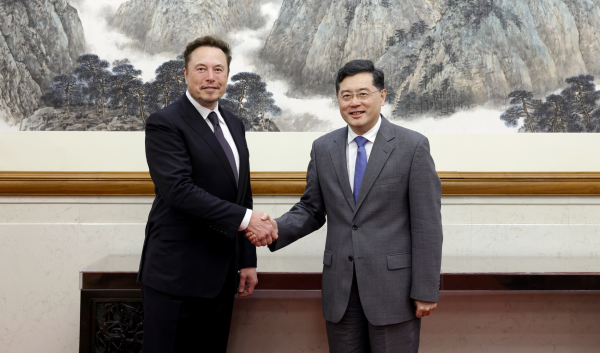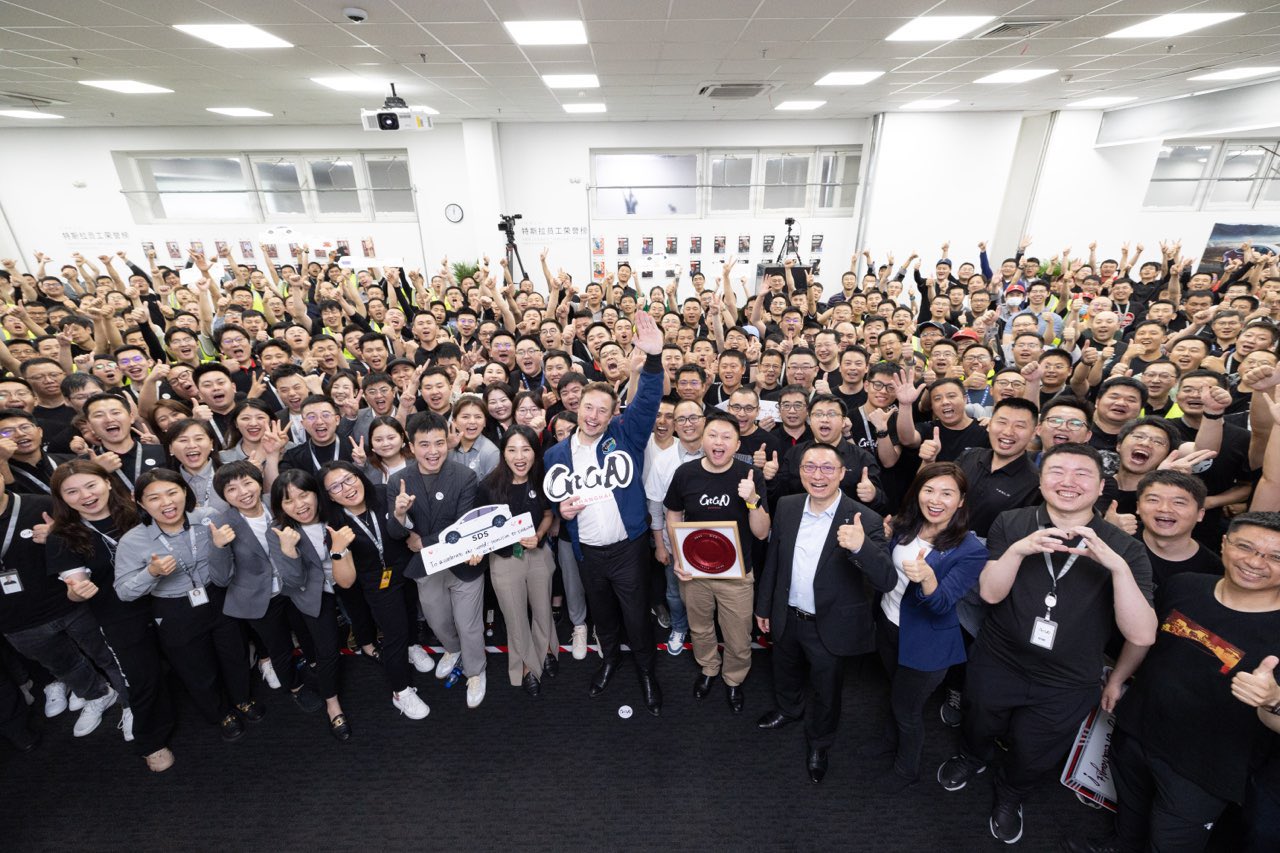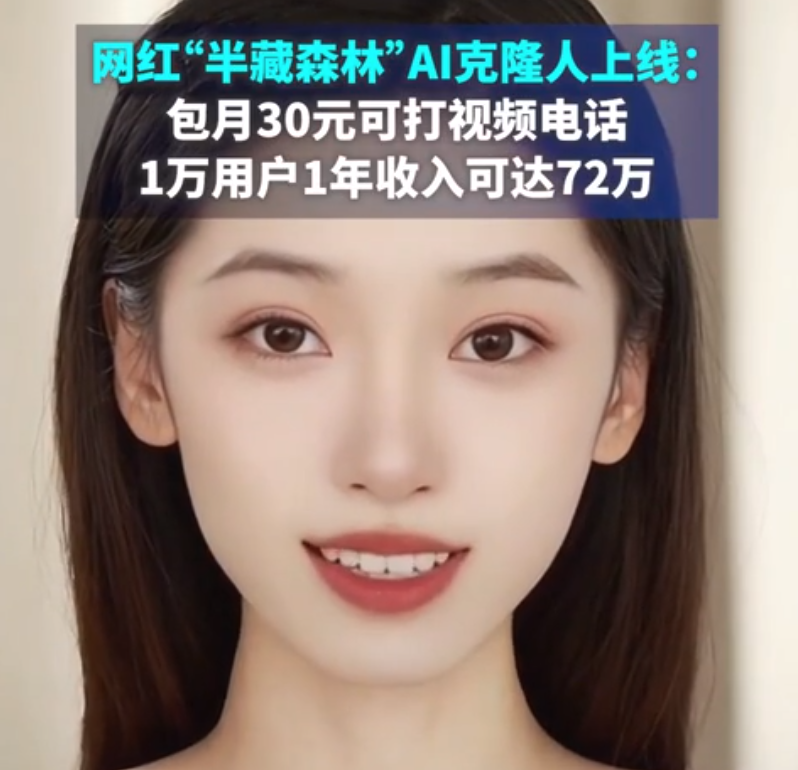Notifications
ALL BUSINESS
COMIDA
DIRECTORIES
ENTERTAINMENT
FINER THINGS
HEALTH
MARKETPLACE
MEMBER's ONLY
MONEY MATTER$
MOTIVATIONAL
NEWS & WEATHER
TECHNOLOGIA
TV NETWORKS
VIDEOS
VOTE USA 2026/2028
INVESTOR RELATIONS
COMING 2026 / 2027
ALL BUSINESS
COMIDA
DIRECTORIES
ENTERTAINMENT
FINER THINGS
HEALTH
MARKETPLACE
MEMBER's ONLY
MONEY MATTER$
MOTIVATIONAL
NEWS & WEATHER
TECHNOLOGIA
TV NETWORKS
VIDEOS
VOTE USA 2026/2028
INVESTOR RELATIONS
COMING 2026 / 2027
About Me
 Latinos Media
Latinos Media Latinos Media provides all types of news feeds on a daily basis to our Members
Posted by - Latinos Media -
on - June 7, 2023 -
Filed in - Technology -
-
860 Views - 0 Comments - 0 Likes - 0 Reviews

China Report is MIT Technology Review’s newsletter about technology developments in China. Sign up to receive it in your inbox every Tuesday.
We usually hear too much about what Elon Musk’s up to lately, but you may have missed the news last week that he paid a three-day visit to China and met with quite a few high-ranking government officials there.
Ever since China lifted most of its pandemic-era travel restrictions in January, foreign executives have been swarming in. And Musk had good reason to go: China is a vital part of Tesla’s electric-vehicle empire, both as a market and as a production powerhouse. But as the owner of Starlink, SpaceX, and recently Twitter, Musk has a much more complicated relationship with the country.
There’s little information in English about Musk’s China trip. That’s primarily because Musk, usually active on the social media platform he just acquired, stayed very quiet during the whole trip. While Twitter is banned in China, people have all sorts of VPN tools to access it. Still, Musk didn’t seem to want to give the impression that he was on Twitter while there. He only tweeted a single time about the trip, after he left China. In fact, he even stopped commenting on other tweets—something he normally does dozens of times every day.
But from the public readouts posted by Chinese government websites and sightings of Musk shared on Chinese social media, we can reconstruct his trip from Tuesday to Thursday.
He had quite a busy itinerary: in 44 hours, Musk met with at least three high-level Chinese officials, dined with the CEO of the world’s largest EV battery supplier, and visited Tesla’s factory in Shanghai, among other things.
Musk’s private jet landed in Beijing on the afternoon of May 30, local time. He met with Qin Gang, China’s new foreign minister and previous ambassador to the US, the same day. According to the ministry’s press release, Musk said in the meeting that he strongly opposes decoupling supply chains between the US and China, because the two countries are “interlinked, like conjoined twins inseparable from each other.” That evening, he had dinner with Zeng Yuqun, the CEO of CATL, which is a key supplier of batteries to Tesla cars.

The next day, he met with two more Chinese ministers, those in charge of commerce and technology. Reuters reported that he also visited Vice Premier Ding Xuexiang—China’s sixth-highest-ranking party official—that afternoon, but the meeting has not been made public by the government or Musk. In the evening, he flew to Shanghai and headed to the Tesla Gigafactory, where he took photos with employees that he would later post on Twitter.

On the morning of June 1, his last day in China, Musk squeezed in one last meeting with Chen Jining, the Shanghai party secretary, before his jet left for Texas at 11:23 a.m.
Musk is not the first American executive to visit China this year: before him, there were Apple’s Tim Cook, General Motors’s Mary Barra, JP Morgan’s Jamie Dimon, Starbucks’s Laxman Narasimhan, and more. But so far, Musk has received the biggest welcome, both from Chinese government officials and from the people on Chinese social media.
The main reason is that China and Tesla have been in a mutually beneficial relationship for years. Not only is China the second-largest market for Tesla, but the Shanghai Gigafactory produced over half of Tesla cars sold globally last year. On the other end, the Shanghai factory also contributed significantly to local employment and taxation, as well as making the city a hub of EV production.
During the strict one-month lockdown in Shanghai last year, the municipal government made extra arrangements to make sure the factory could resume production even while other parts of city life were on pause. During this visit, Musk acknowledged those efforts and thanked the Chinese commerce minister.
But there are other things that complicate the relationship between Musk and China.
For one thing, Starlink has long been a concern for Beijing because of its capacity to circumvent traditional communication blackouts and offer additional satellite intelligence. Its application in Ukraine during the war, in which China largely stands on the side of Russia, has made the issue clearer. Earlier this year, it was reported that researchers in China’s military academies have published dozens of papers on how to work against the Starlink satellites.
On Weibo, the Chinese equivalent of Twitter, Musk (or whoever operates his verified account) posted a note on May 30 that seemed designed to smooth things over a little: “The China space program is far more advanced than most people realize.”
At the core of Musk’s complicated relationship with China is the fact that his different companies have different relationships with the Chinese government. Tesla is exceptionally welcome in the country; Twitter is a big headache for the government and is strictly banned; SpaceX and Starlink are somewhere in between, representing both a security risk and a collaboration opportunity.
So far, his ownership of the other companies hasn’t caused Tesla to fall out of favor in China. But in this age of sustained US-China tensions, dealing with the Chinese government is a very delicate act for any American company, and Tesla will probably be a bellwether. No matter how much trolling he likes to do in the US, Musk had to be more cautious when he was in China.
What do you think of the trend of American business executives visiting China? Let me know your thoughts at zeyi@technologyreview.com.
Catch up with China1. Montana’s TikTok ban could be another “junk internet bill”—highly politicized and unlikely to survive judicial review. (MIT Technology Review)
2. Sunday marked the 34th anniversary of the protest and massacre in Tiananmen Square.
3. Shein, the Chinese fashion e-commerce company that has attracted a large Gen Z following, has hired Washington lobbyists for the first time, to respond to allegations of forced labor practices. (Politico)
4. Defense officials around the world are gathering in Singapore this week for the high-level Shangri-la Dialogue. (CNBC)
5. As Pride month begins, China’s LGBTQ communities are losing their few support groups as they are squeezed by the government to shut down operations. (The Economist $)
6. Local police in China are increasingly dealing with a new type of scam: people are using generative AI tools to impersonate others and request money transfers from the victim’s contacts. (Wall Street Journal $)
Lost in translationWould you spend $1 a month to have unlimited chats with a simulacrum of your favorite influencer? Xiaoice, a Chinese AI company, just offered this service. Every Thursday from now on, the company will release a new “AI clone” of a Chinese influencer (the first is designed around a 20-something female model named Hu Wenjie, better known by her online alias 半藏森林). Users can converse by text and voice with such AI chatbots. If they spend 30 RMB ($4.22) a month, the “influencer” will double as an office assistant and help with tasks like writing marketing copy. (Why would you want your influencer to do that?) The service has a strong romantic tone: the basic subscription is called the “relationship mode.” For now, the majority of the profits go to the influencer, according to a report by Chinese state broadcaster CCTV.
 One more thing
One more thing
The latest viral social media trend in China is packing a lunch that’s simple and sometimes too bland to eat and calling it 白人饭—literally, “white people food.” It’s surely a dig at the quick lunches in American food culture, but there are also people who say they’re doing it to lose weight or to forgo complicated food prep.